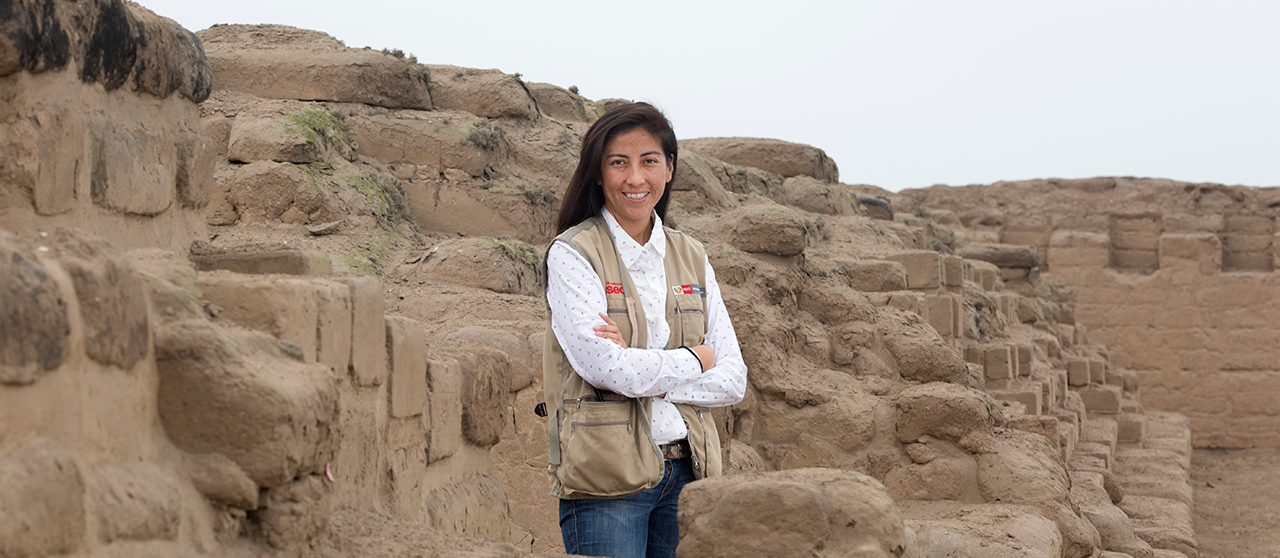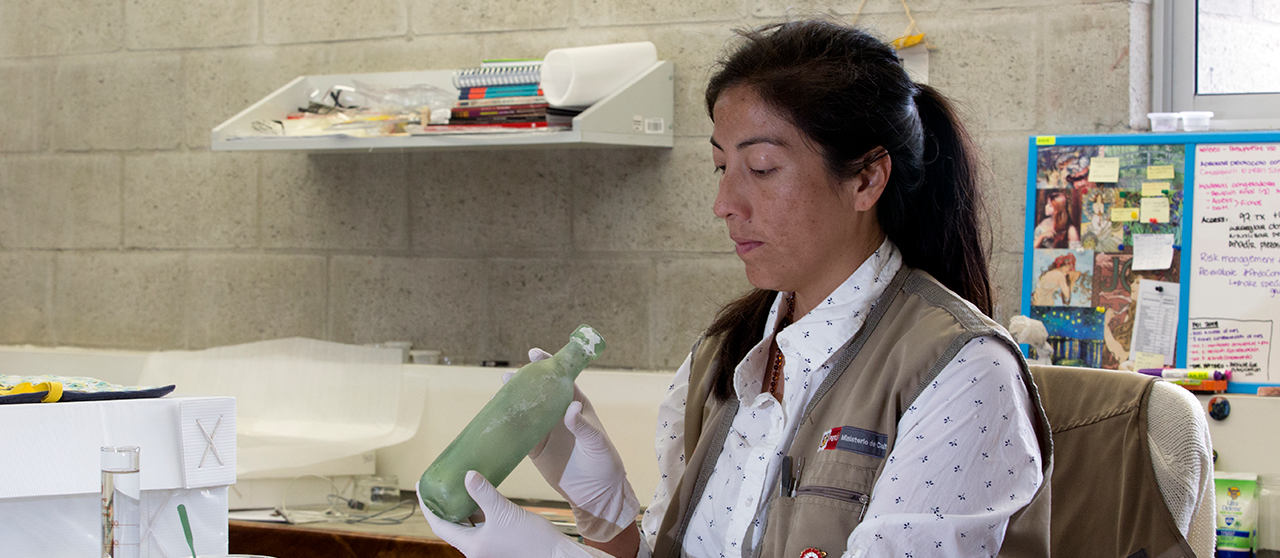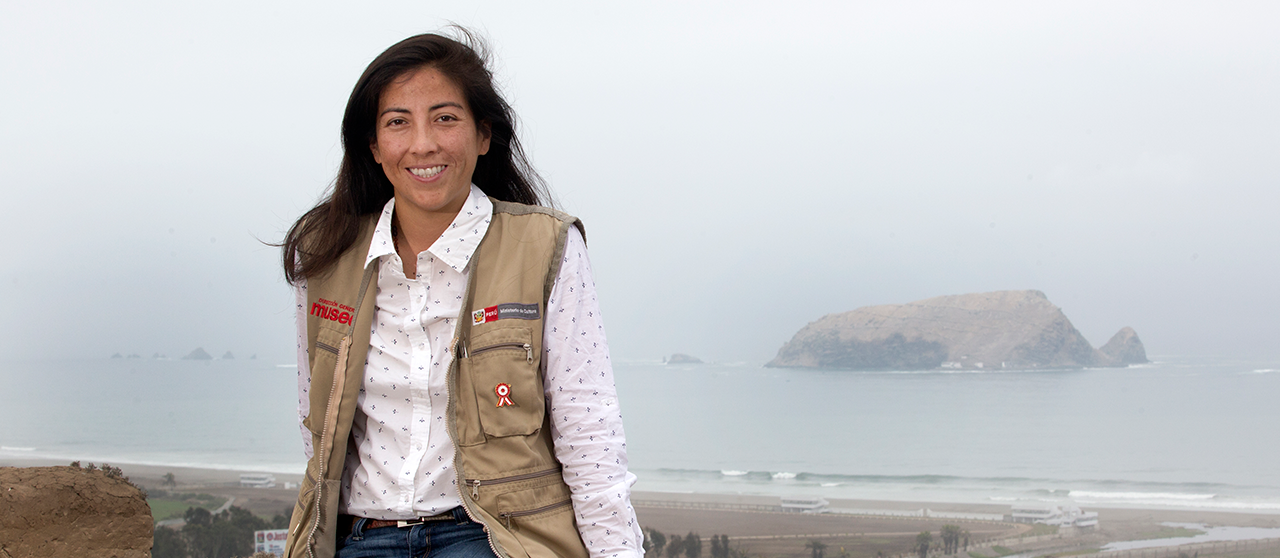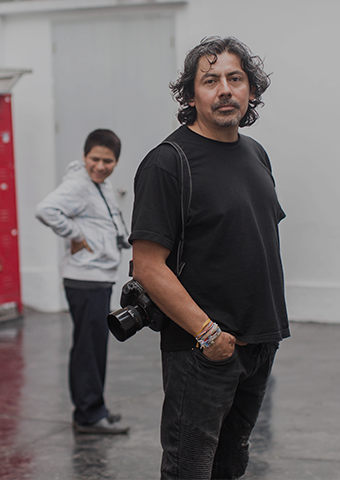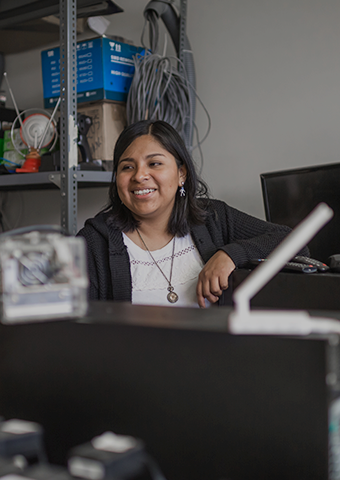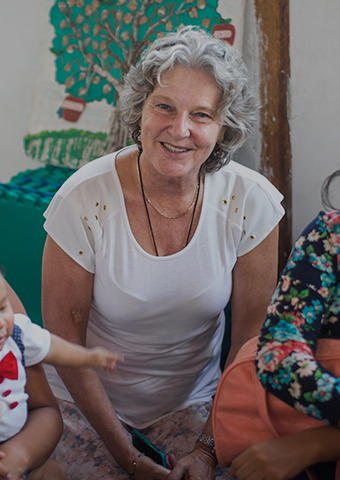“I grew up in a horizontal home in which we could all give our opinion, as crazy as it was, and it was considered and respected”
How did you fall in love with this job?
I do not know. I think I was in love with it since I was born (laughs…). I love the sea, I love my profession, I love underwater archaeology!
Your parents are school teachers. Is there any connection between your job and theirs?
Perhaps. My grandparents were also teachers. We grew up in an environment full of teaching, dialogue, questioning. I had the privilege of growing up in a horizontal home in which we could all give our opinion, as crazy as it was, and it was considered and respected. Maybe my curiosity and passion for underwater adventures were encouraged there.
You will visit your school in a couple of days to give a talk to children about your experience.
I am very excited. I would love my work to inspire and encourage people to protect our patrimony, take care of the environment and our natural resources, be passionate about research.
You have borne very low temperatures under water.
Now there is special equipment, such as dry suits that allow you to be under water und stay warm; it is possible as long as you have the resources.
But when you found the trail of “Qhapaq Ñam”, you did not have the right equipment.
I was diving in a 7 mm wetsuit, which is adequate for shore divers. I put on a thinner suit beneath and the “war” wetsuit on it. I was still freezing; I had no gloves and the cap was thin, but the excitement and desire to do the job helped me get through…
The cold versus finding what you though was there.
Yes! We were two people freezing and when we were about to come to the surface, we saw a part of the trail and, a little further away, the structure. We forgot about the cold and dived through it and searched! Once out, we realized that we had turned purple and did what we could to get warm.
But you were happy.
Very happy. Whether you make a discovery or not, the experience always makes you happy. It is another world, an extremely relaxing experience, because there is not only cultural patrimony but also natural patrimony. You see a different landscape down there, so there is always something to discover.
What can you do with the information you collect?
You can give talks, write tales for children ―so that they know and enjoy this patrimony―, hold workshops in which people can dive and get to know the job. There are many ways of letting people know about the results of this research work.
And why are they not being done?
Maybe due to the lack of interest on the part of authorities, or lack of resources. It is also our responsibility as archaeologists to make people know what we do. I try to do it as much as possible.
“We were freezing and when we were about to come to the surface, we saw a part of the Inca trail. We forgot about the cold and dived through it and searched! We realized that we had turned purple and did what we could to get warm”
There are only a few underwater archaeologists in Peru.
We are only four or five.
How many of them are women?
Two. Divers are generally sexist. They believe they are stronger and brush us aside. That is why we must know how to command respect and prove we are capable.
Are they coming round?
It is a bit hard. We have to command respect in a subtle manner and make them see ―with our work― how things really are.
To specialise in this job, you went to Europe, and you have dived in many countries. What is the potential of underwater archaeology in Peru?
Underwater patrimony is different around the world, and Peru has it all. I hold a master’s degree in Prehistory from the Sorbonne (France) and I am currently completing my PhD studies in Prehistory. I have dived in the Mediterranean Sea, in the Atlantic Ocean, in different countries of Latin America, and I have seen wonders! But, as I told you before, Peru has a long history, which goes from the first settlers in the continent ―nomadic people who hunted and gathered to survive and lived with fauna that does not exist anymore― to the republican period, that dates back to less than hundred years ago. And the evidence of all of this is under water. Our underwater patrimony has a long manifold timeline: buildings that ended up under water due to thaw, the Inca’s port system in our coasts, shipwrecks from the Colonial Period, when Peru was already connected to the entire world, and all the Inca and Pre-Inca history, in which lakes, lagoons and the sea were sacred places for offerings. The topics are diverse and broad.
Peru has a paradise under water.
Just like on earth, we have an unexplored and wealthy world under water.
It is urgent to have more underwater archaeologists.
Definitely.


